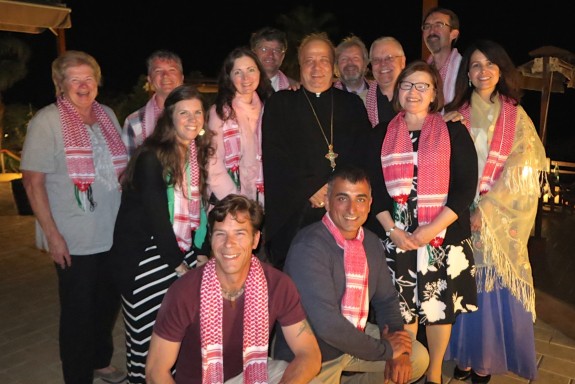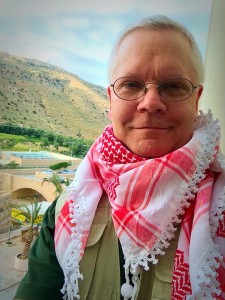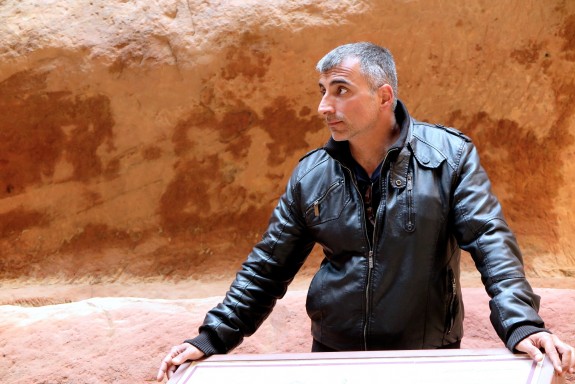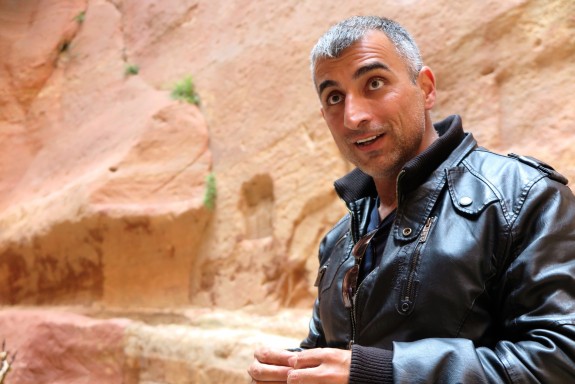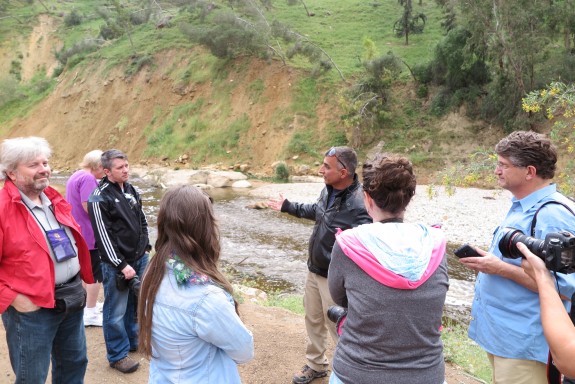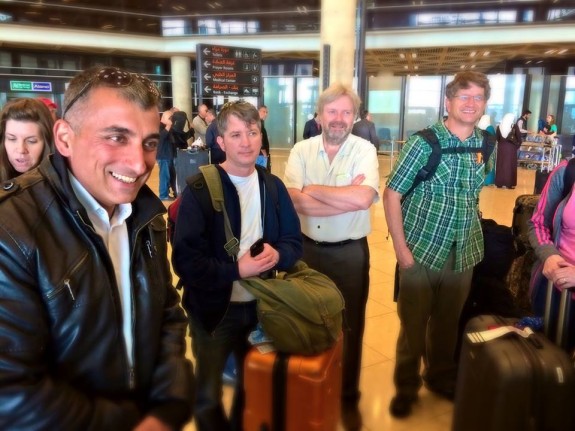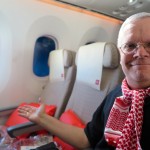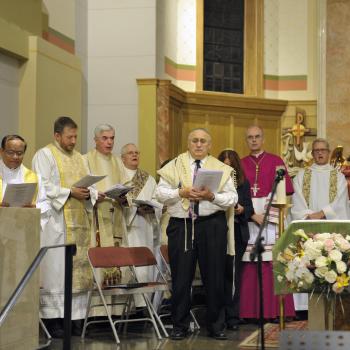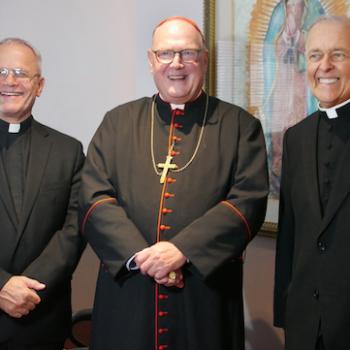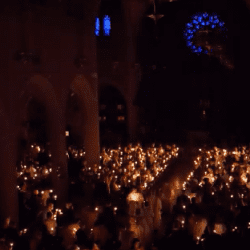Our group gathered for a final farewell dinner at our resort last night. We were joined by Fr. Nabil Haddad, whom we first met last Saturday, at his Melkite parish’s Easter Vigil.
Fr. Nabil gave each of us a little remembrance of our visit: those red and white keffiyehs, or scarves. Some background:
A traditional Middle Eastern headdress fashioned from a square scarf, usually made of cotton…it is typically worn by Arabs, Kurds and some Jews, Indians and Turks.
It is commonly found in arid regions as it provides protection from sunburn, dust and sand. Its distinctive standard woven checkered pattern may have originated in an ancient Mesopotamian representation of either fishing nets or ears of grain, but the true origin of the pattern remains unknown.
The keffiyeh has been worn by Arabs residing in regions in Arabia, Jordan and Iraq for over a century. During the 1960s, usage of the black and white Palestinian keffiyeh grew as Palestinian nationalismincreased and the Palestinian leader Yasser Arafat adopted it as a symbol. Toward the end of the 1980s, the keffiyeh became a fashion accessory in the United States and, during the 2000s, it became very popular among adolescents in Tokyo, where it was often worn with camouflage-style clothing.
I bought a large one back in Petra, and wore it around my neck. Someone online wondered if I was wearing it wrong. I found this little fashion fact:
As with other articles of clothing worn in wartime, such as the T-shirt, fatigues and khaki pants, the keffiyeh has been seen as chic among non-Arabs in the West. Keffiyehs became popular in the United States in the late 1980s, at the start of the First Intifada, when bohemian girls and Jewish punks wore keffiyehs as scarves around their necks. In the early 2000s, keffiyehs were very popular among youths in Tokyo, who often wore them with camouflage clothing. The trend recurred in the mid-2000s in the United States, Europe, Canada and Australia, when the keffiyeh became popular as a fashion accessory, usually worn as a scarf around the neck in hipster circles. Stores such as Urban Outfitters and TopShop stocked the item (after some controversy, however, Urban Outfitters pulled the item). In spring 2008, keffiyehs in colors like purple and mauve were given away in issues of fashion magazines in Spain and France. In UAE, males are inclining towards more western headgear while the women are developing preferences for dupatta – the traditional head cover of the Indian subcontinent.
I’m so hip.
Anyway…turning back to that group picture: the guy kneeling in the front, wearing a grey sweater, is our guide Ra’ed.
Do not ever visit Jordan without having Ra’ed as your guide. Seriously. He’s simply the best. Warm, smart (INSANELY smart), funny, patient, compassionate—and, to top it off, imbued with a deep Christian spirituality that gave power and purpose to what we were experiencing. (He’d make a great deacon!)
I jokingly called him “Moses” during this trip. But I think he had a lot of Jesus in him, too.
God bless you, Ra’ed, and thank you. If this trip left many of us changed, it was in no small measure because of you.

